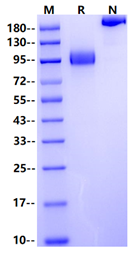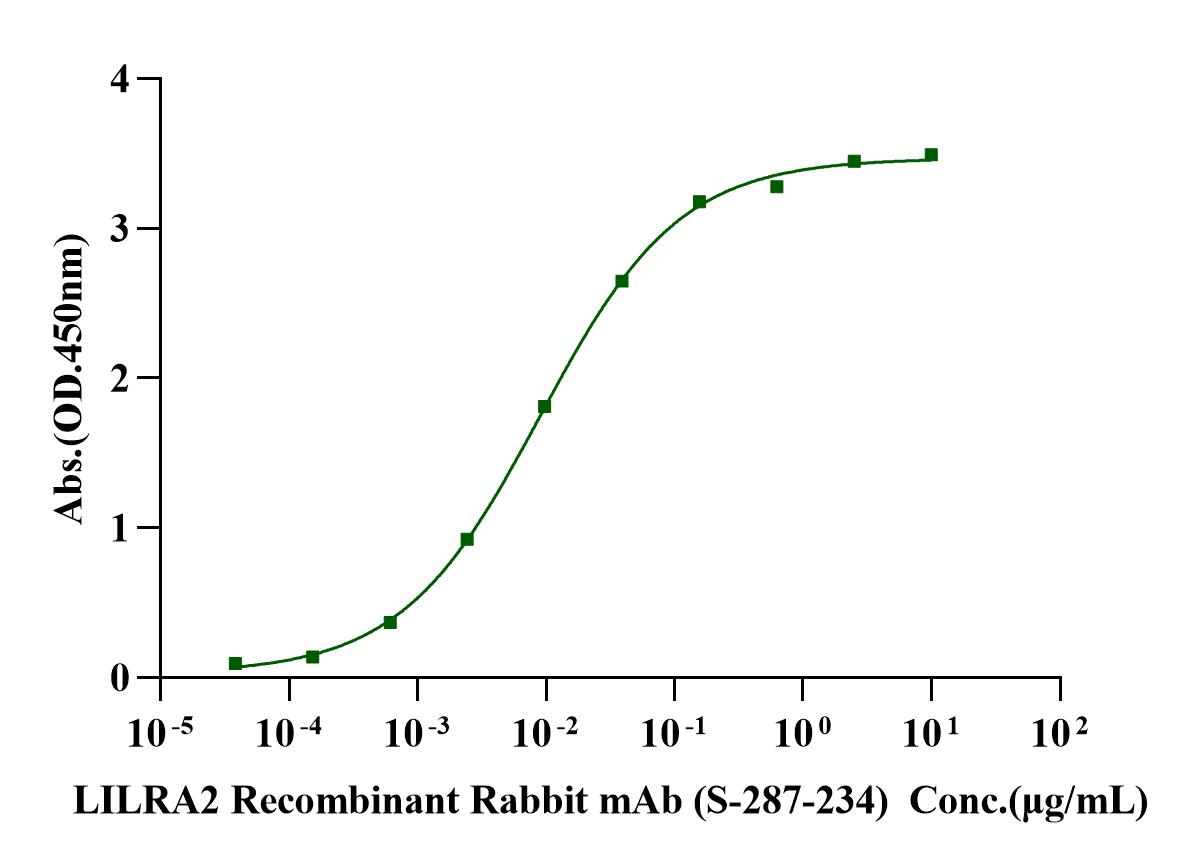Gly24-Asn449, with C-terminal Human IgG Fc GHLPKPTLWAEPGSVIIQGSPVTLRCQGSLQAEEYHLYRENKSASWVRRIQEPGKNGQFPIPSITWEHAGRYHCQYYSHNHSSEYSDPLELVVTGAYSKPTLSALPSPVVTLGGNVTLQCVSQVAFDGFILCKEGEDEHPQRLNSHSHARGWSWAIFSVGPVSPSRRWSYRCYAYDSNSPYVWSLPSDLLELLVPGVSKKPSLSVQPGPMVAPGESLTLQCVSDVGYDRFVLYKEGERDFLQRPGWQPQAGLSQANFTLGPVSPSHGGQYRCYSAHNLSSEWSAPSDPLDILITGQFYDRPSLSVQPVPTVAPGKNVTLLCQSRGQFHTFLLTKEGAGHPPLHLRSEHQAQQNQAEFRMGPVTSAHVGTYRCYSSLSSNPYLLSLPSDPLELVVSEAAETLSPSQNKTDSTTTSLGQHPQDYTVENiegrmdPKSSDKTHTCPPCPAPELLGGPSVFLFPPKPKDTLMISRTPEVTCVVVDVSHEDPEVKFNWYVDGVEVHNAKTKPREEQYNSTYRVVSVLTVLHQDWLNGKEYKCKVSNKALPAPIEKTISKAKGQPREPQVYTLPPSRDELTKNQVSLTCLVKGFYPSDIAVEWESNGQPENNYKTTPPVLDSDGSFFLYSKLTVDKSRWQQGNVFSCSVMHEALHNHYTQKSLSLSPGK
90-100kDa
Reconstitute at 0.1-1 mg/ml according to the size in ultrapure water after rapid centrifugation.
1.Gene ID: 11027, updated on 18-Aug-2023.
LILRA2(leukocyte immunoglobulin like receptor A2), also known as CD85H and LIR7(Leukocyte immunoglobulin like receptor 7), belongs to the Class A subfamily of LIR receptors (LILRAs) and is a single-generation type I transmembrane protein. Mature human LILRA2 consists of a 426 amino acid (aa) extracellular domain (ECD) with 4 Ig-like domains, a 21 aa transmembrane segment, and a 13 aa cytoplasmic tail. LILRA2 is expressed predominantly on monocytes and B cells, and at lower levels on dendritic cells and natural killer cells. LILRA2 cross-linking on monocytes induces pro-inflammatory cytokines while inhibiting dendritic cell differentiation and antigen presentation.

2μg (R: reducing conditions, N: non-reducing conditions).

Immobilized LILRA2 Fc Chimera Protein, Human (Cat. No. UA010625) at 2.0μg/mL (100μL/well) can bind LILRA2 Recombinant Rabbit mAb (S-287-234) (Cat. No. S0B0643) with EC50 of 7.83-10.33ng/mL.